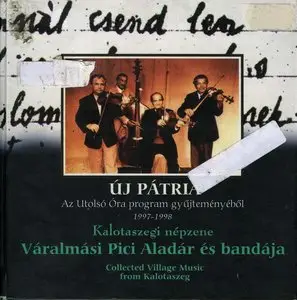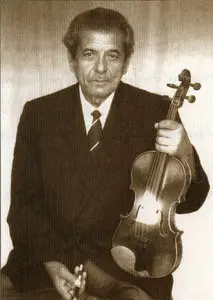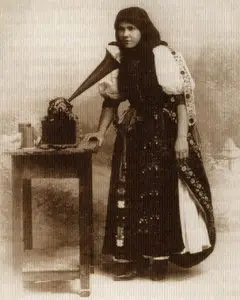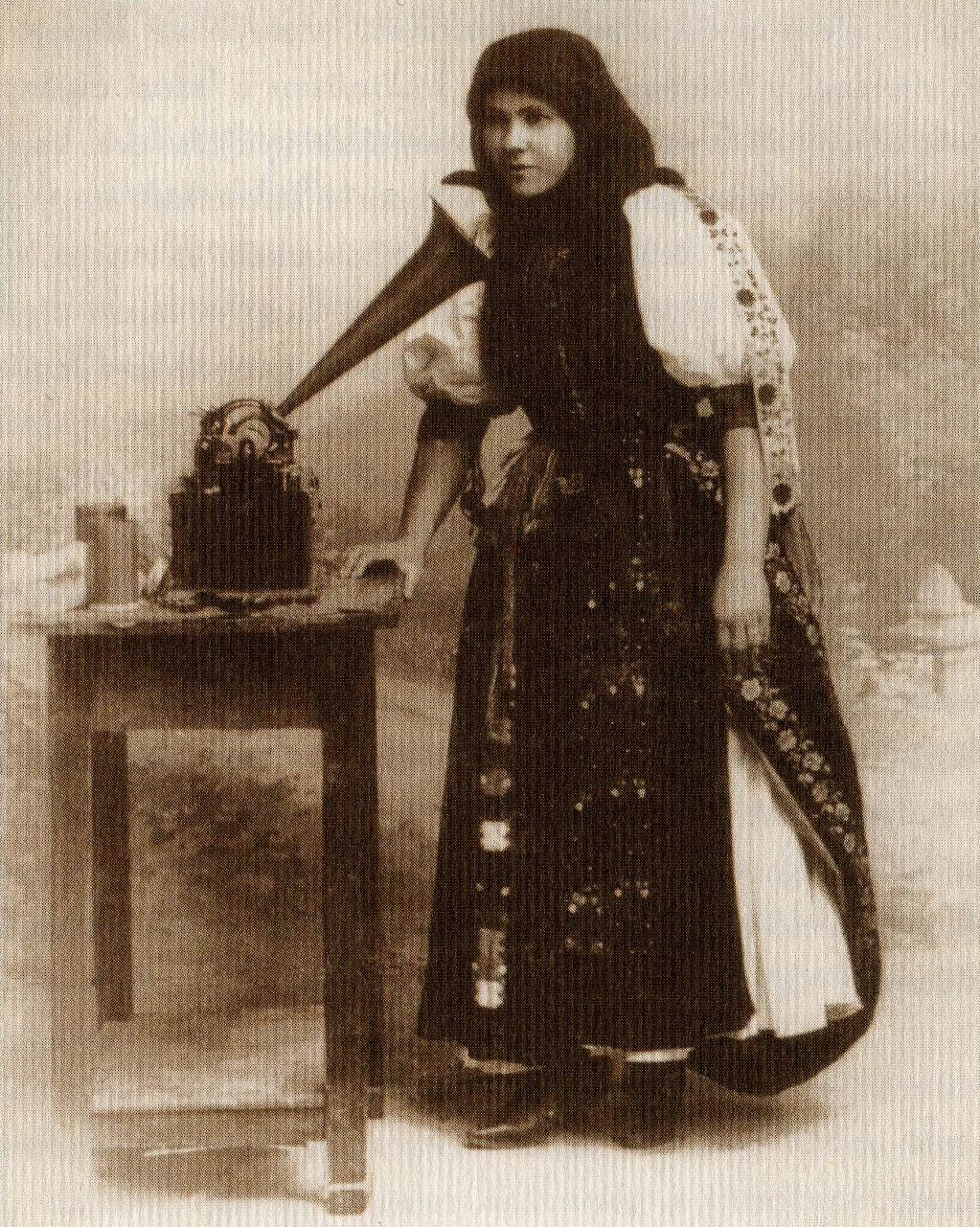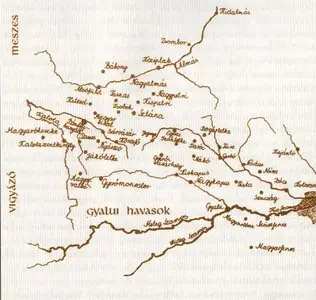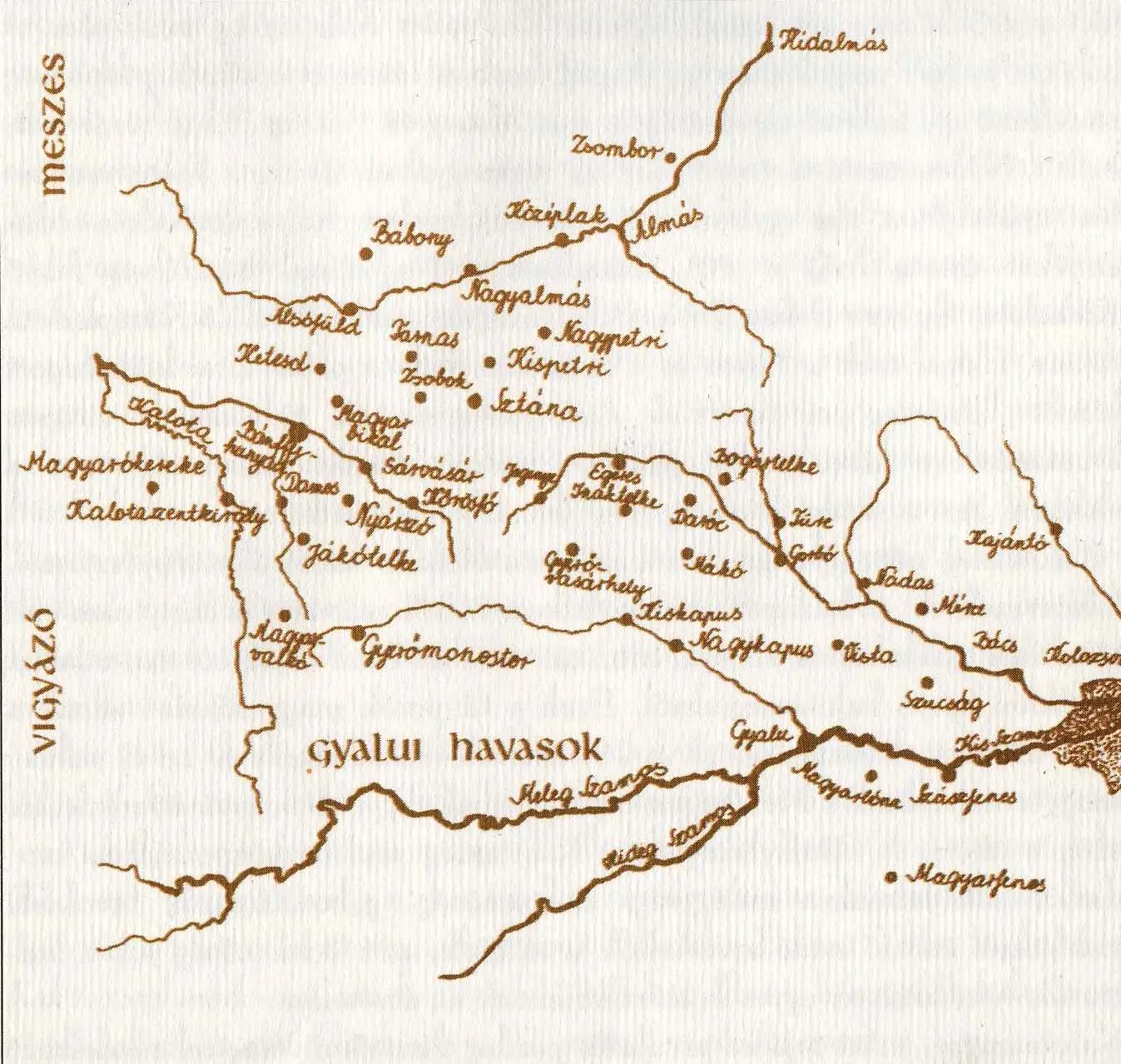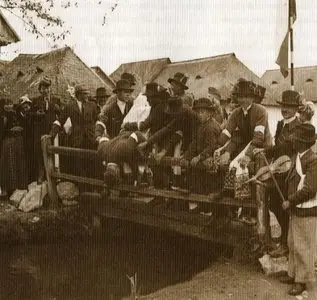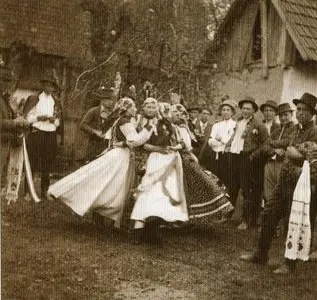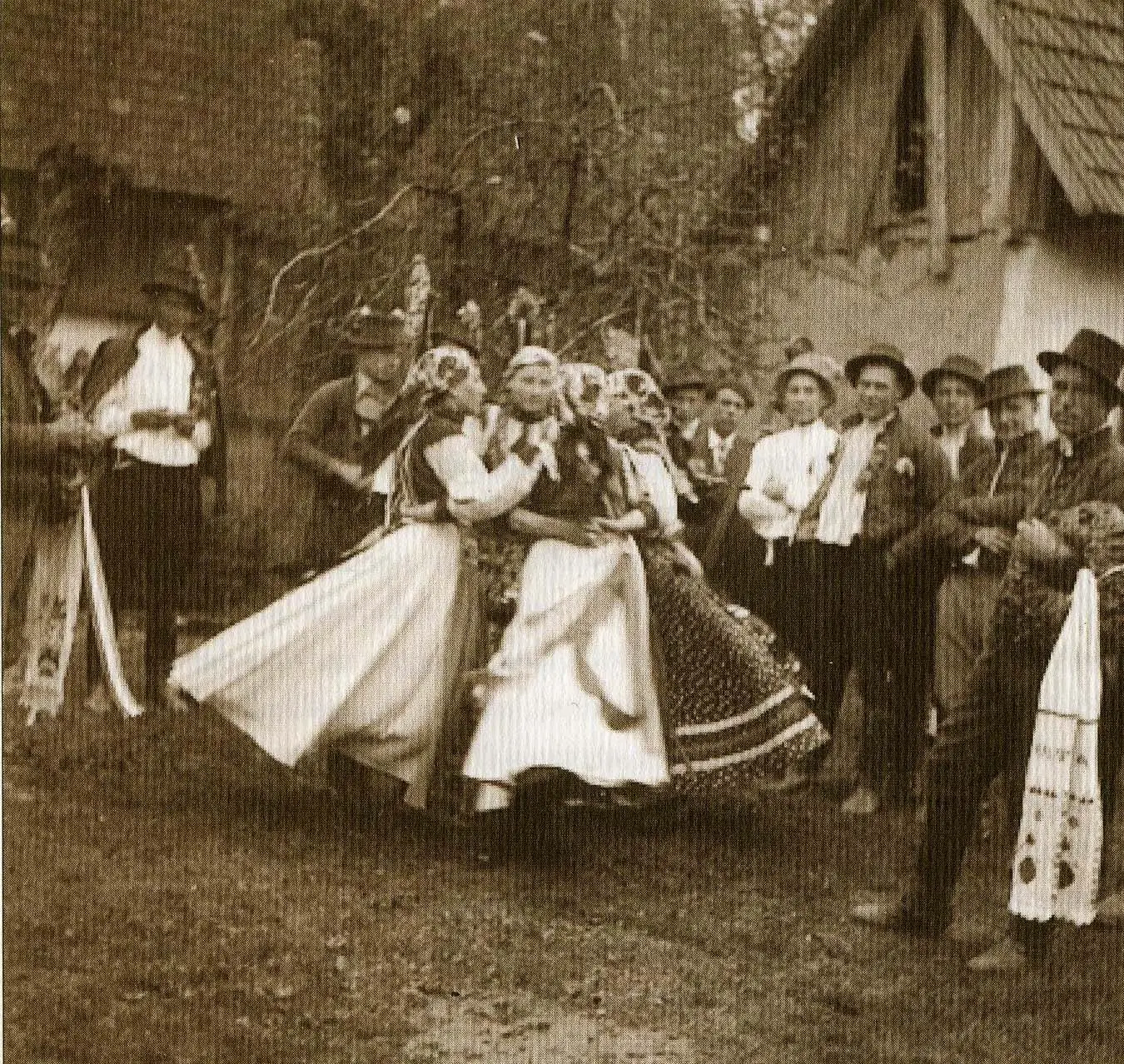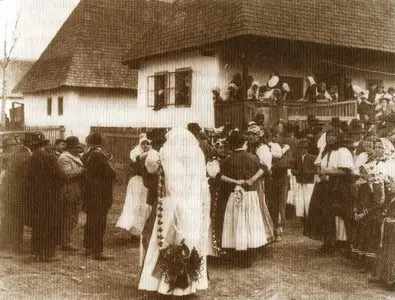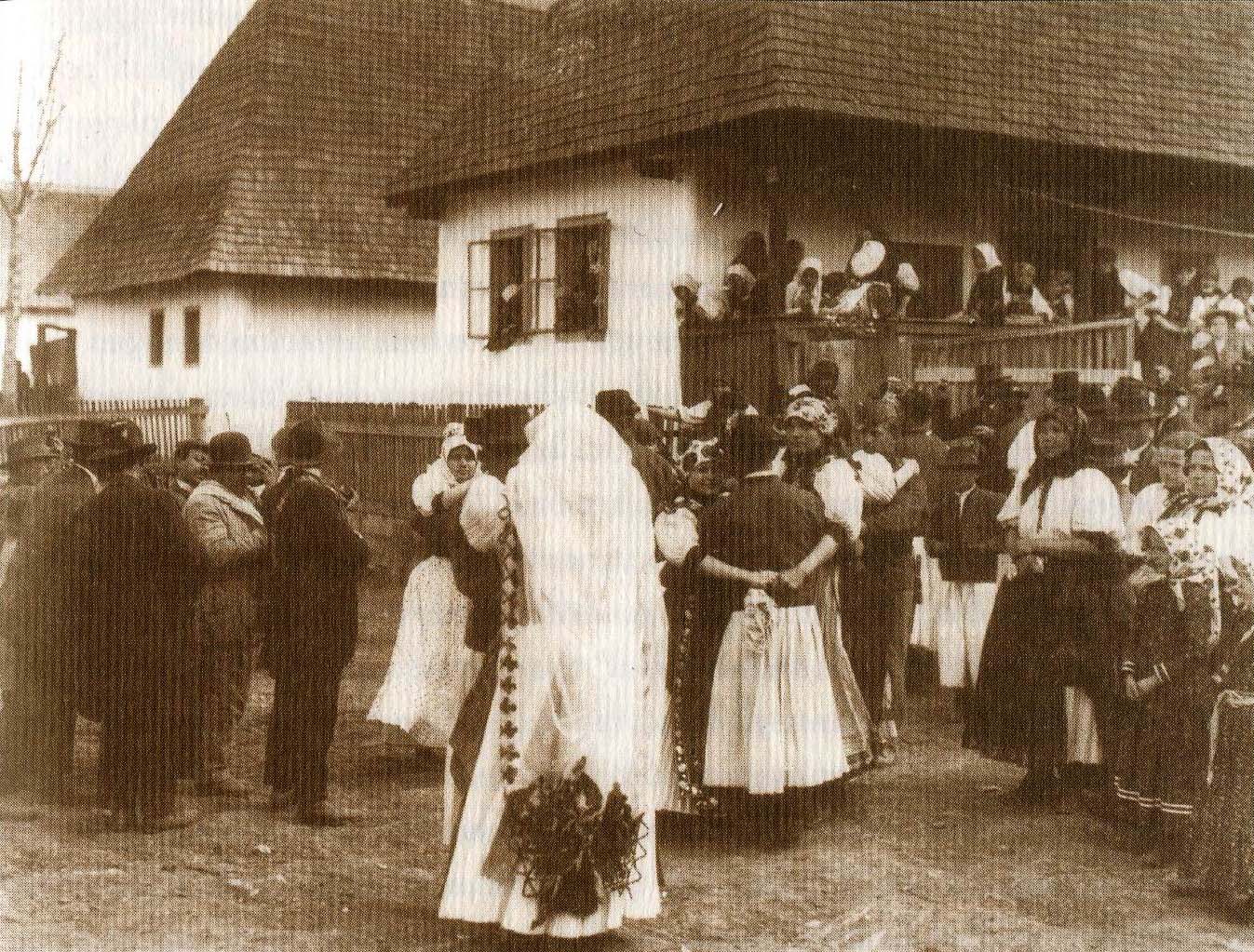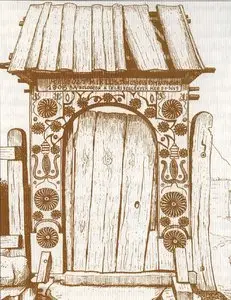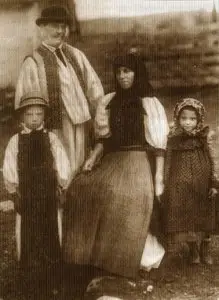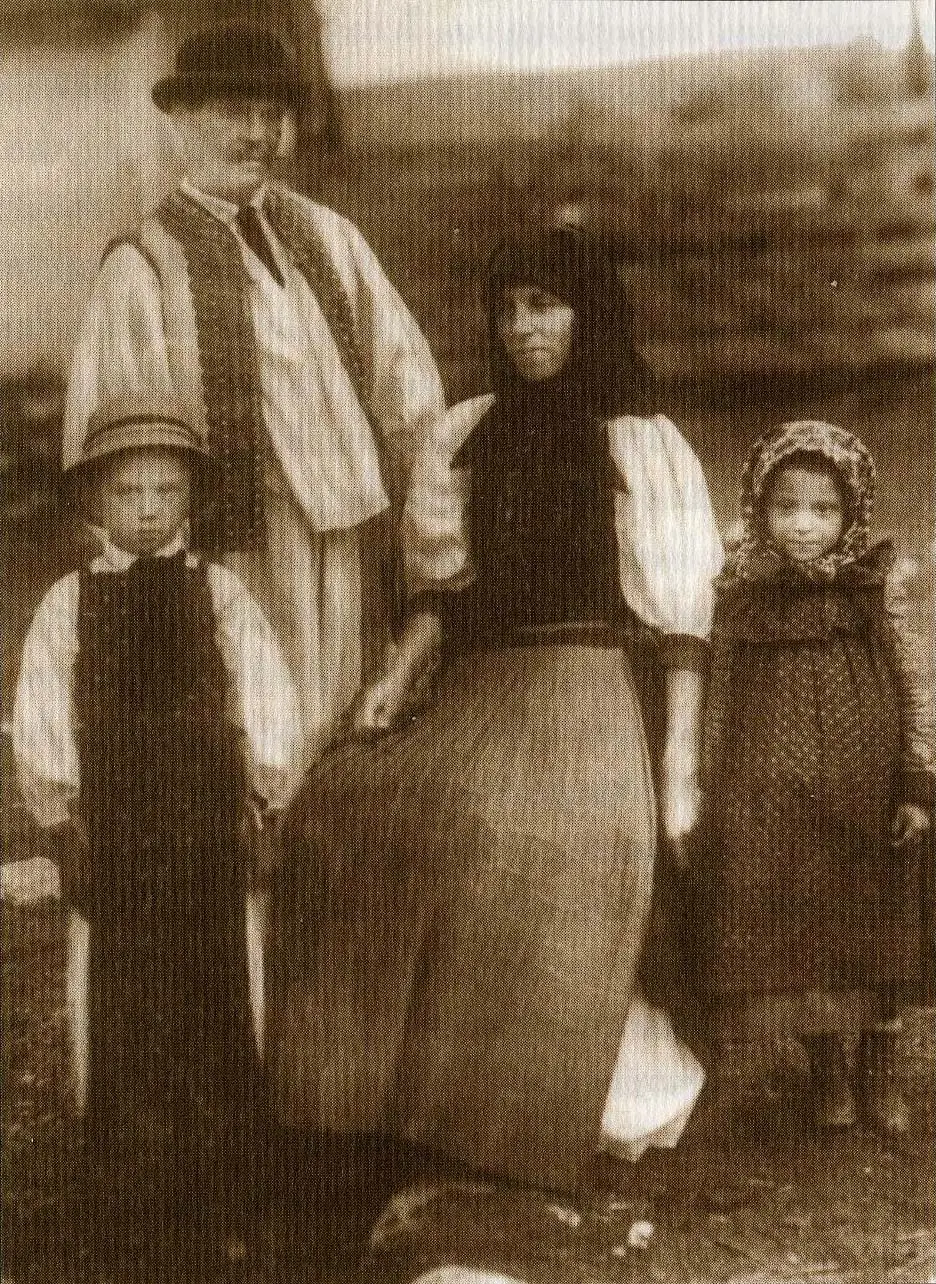Váralmás - Almaşu. Váralmási Pici Aladár and his Gypsy band. Village music from Kalotaszeg
“Final Hour” Program: Traditional Village Music from Transylvania. “Új Pátria” series 1
Budapest, Fonó | 1998 | FA-101-2 | APE / MP3 320kbps | 370 / 165 MB | booklet JPG
Aladár Zágor, 1932-1997
The Final Hour Program and the “Új Pátria” Series
Since the governmental changes in Romania in 1990, the ease of crossing of the borders, increased possibility of working abroad, influx of consumerism and the cultural and sub-cultural effects caused by new of availability music cassettes have all contributed to more rapid changes in the folk traditions in Transylvania, even in the remotest villages. That is why the Fonó Budai Zeneház set to work to provide the financial background and facilities necessary to do this comprehensive collection of Transylvanian village music.
The Final Hour project is supported by the Institute of Musiscology at the Hungarian Academy of Sciences. Starting in September 1997, there have been regular recording sessions with bands from Transylvanian villages who still play the local traditional music. Each band is at our disposal for five days during which time it is possible to make archival recordings of not only each band’s repertoire of melodies which serves the entertainment needs of more than one ethnic group, but also to document information regarding customs surrounding the traditional music and dance life. Singers and one or two couples of good dancers arrive to Budapest for these recording sessions with each band, helping to maintain the vocal and dance function of the instrumental music. Part of the program is devoted to documentation of the existing Transylvanian traditional flute music.
The CD archive resulting from work of the Final Hour program offers a vast amount of material on the musical traditions of Hungarians, Romanians, Gypsies, Saxons and Jews in Transylvania for research studies as well as a wealth of authentic material and background information for those involved in popular folk music movements. The complete collection will be available for scientific research in the archive of the Institute of Musicology of the Hungarian Academy of Sciences.
The Fonó Records has started this series of CDs under the title “New Pátria,” presenting selections of the most representative material from the collection. This series is the spiritual descendant of the “Pátria” series from the end of the 1930’s by Béla Bartók, Zoltán Kodály and László Lajtha in cooperation with the Hungarian Radio and the Museum of Ethnography.
Kalotaszeg
One of Transylvania’s most famous and earliest studied historical-ethnographical regions lies west of Kolozsvár (Cluj), surrounded by the Gyalu, Vigyázó and Mézes ranges. In this otherwise relatively uniform area of folk culture, villages which lie on the borders with the neighboring ethnographical regions of Szilágyság, Mezőség, Aranyosszék, are communities that have their own characteristic features mixed in with the cultures of those respective areas. There are between 40 and 50 communities which ethnographical researchers consider as defining this area.
Regarding the dances of Kalotaszeg, the first references are from the end of the 19th century. In earlier times there were musician dynasties existing in many villages, who not only took care of the musical needs of their own villages, but of the entire region as well. With the spread of popular music, interest in and need for traditional music in the villages of Kalotaszeg has decreased, thus in more recent years the number of Gypsy musicians has considerably decreased, or the musicians have retrained themselves to meet new musical needs. Playing on this recording is one of the last representatives of the old style Kalotaszeg string bands.
The traditional life in Kalotaszeg includes many dance events, some of which are centered around life’s rites of passage, some around the yearly seasonal holidays. Of the Hungarian men’s dances, the “legényes” was the most widespread, whereas the “verbunk” (the so-called men’s recruiting dance) wasn’t so well known. The Kalotaszeg legényes is the most archaic, most virtuose and most developed among the fast men’s dances in Transylvania. In the past, the dance cycle began with this dance, they danced it one at a time, often competitively, while the girls joined into a circle somewhere in the background and turned, doing what is called in Hungarian “siftelés”, while yelling out short verses in rhythm with the music called “csujogatás”. The dance cycle continued with a couple dance in which they did a double “csárdás” step and had variations of motifs which included an upbeat turn in a closed position, in turn with stamps, the woman turning under her own arm, both the man and the woman turning away from each other.
The faster music, known as “szapora” is danced similarly, though adjusting for the considerably quicker tempo. During either the slow or fast versions, the man may let go of his partner while he does solo figures which may include some of the legényes figures. The music for the legényes is very rich with respect to Transylvanian music, having more than thirty melodies. There are even more csárdás and szapora melodies due to the fact that in addition to old style melodies, new style Hungarian folk melodies and even 19th-century city csárdás music have been assimilated into this style.
In the breaks between dances, two important types of tunes are sung in a party situation: the “keserves” (lament) with completely unspecific rhythm, and the “hajnali” (dawn song) having slow rocking rhythm. There are also specific songs which belong to specific holidays such as the name day greetings and Christmas carols.
The Hungarian, Romanian and Gypsy music is in many ways very intertwined, while still having some specific characteristics. All three ethnic groups dance the csárdás and szapora, sometimes referring to the latter by a different name. Only the Romanians dance variations of the slow and quick “forgatós” (a turnin dance) which is called invirtita rura si iute. Jews also lived in the area, who in addition to taking on the music of the Hungarians, in some places preserved their own melodic material as well. In their memory, the Váralmás band plays a tango, which was a part of the well known Jewish repertoire.
The material on this recording was recorded between October 6-10, 1997. Shortly after returning home, the prímás, Pici Aladár, passed away. He was the last representative of the Váralmás musician dynasty. This recording serves as a reminder of his vast repertoire, more of which can be heard on the 15 archival CDs which were also recorded at that time as a part of the Utolsó Óra (Final Hour) Program.
Track list:
1. Slow and quick couple dances for carnival
2. Dawn song, slow and quick dance for the Romanians
3. St. Stephen’s day greeting from Felszeg
4. Verbunk (recruiting dance) music
5. Dawn song, slow and fast Gypsy couple dances
6. Recruiting dance, legényes, quick couple dance from Váralmás
7. Christmas carols
8. Lament, dawn song, slow and quick couple dances from Felszeg
9. Romanian couple dances
10. Dawn songs
11. Jewish tango
12. Lament, dawn song, slow and quick couple dances
Musicians:
ZÁGOR Aladár “Pici” (1932-1997, Váralmás) violin
CILIKA Gyula (1958, Bogártelke) violin
LŐRINCZ Albert “Ötvös Berci” (1927, Váralmás) viola
ÖTVÖS Sándor (1936, Váralmás) double bass
Recorded at the Studio of Fonó Music Hall in 1997
Download:
MP3 320k + booklet (165 MB):
http://rapidshare.com/files/183060348/ujpatria01-mp3.rar
http://ifile.it/m20o6r8/ujpatria01-mp3.rar
APE + booklet (370 MB):
http://rapidshare.com/files/183061807/ujpatria01-ape.part1.rar
http://rapidshare.com/files/183061435/ujpatria01-ape.part2.rar
MP3 320k + booklet (165 MB):
http://rapidshare.com/files/183060348/ujpatria01-mp3.rar
http://ifile.it/m20o6r8/ujpatria01-mp3.rar
APE + booklet (370 MB):
http://rapidshare.com/files/183061807/ujpatria01-ape.part1.rar
http://rapidshare.com/files/183061435/ujpatria01-ape.part2.rar


